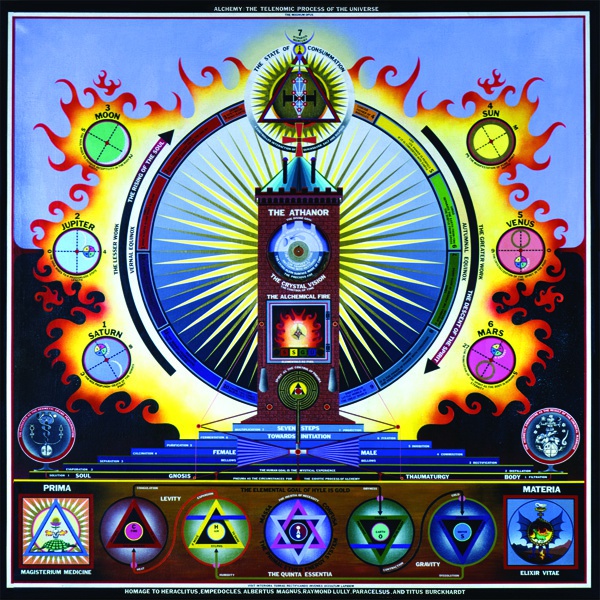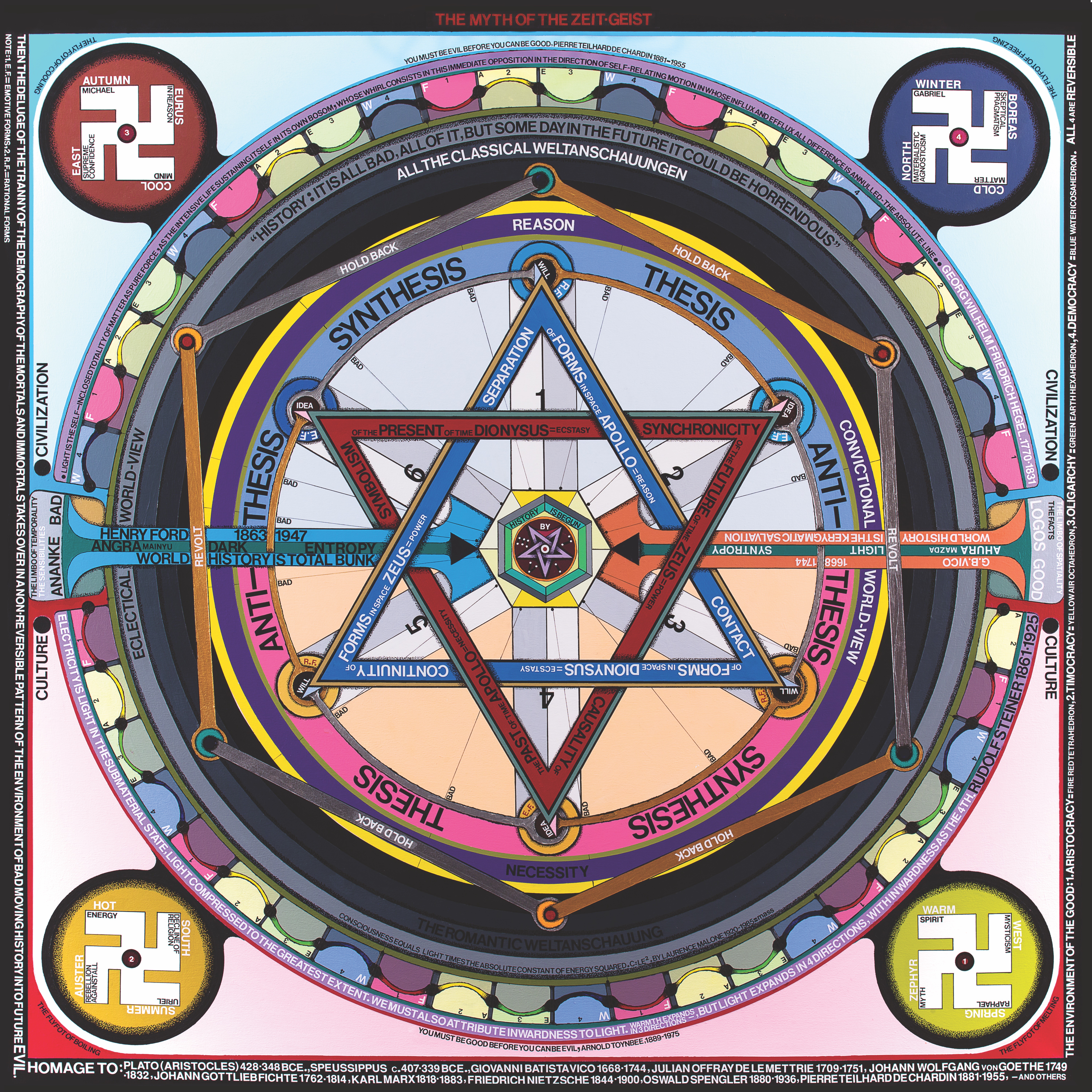
Paul Laffoley was an artist and visionary, a cartographer of consciousness, and an architect of alternate realities. Across his detailed and complex paintings, he constructed visual thought-forms that combined mysticism, scientific theory, and futuristic speculation into diagrams of the universe. Laffoley's work is situated between visionary art and speculative metaphysics, offering an esoteric yet remarkably coherent view of reality.
Laffoley’s creative process drew from a wide and unconventional range of sources: quantum physics, classical mythology, occult symbolism, architectural theory, and even science fiction. He often referred to his paintings, featuring occult symbolism, not simply as artworks, but as machines: devices for thought, transformation, and exploration. This blend of analytical structure and spiritual openness places him within the lineage of visionary polymaths, yet distinctly modern in form and ambition.

A Language of Symbols and Structures
Central to Laffoley’s practice was an interest in esoteric philosophy, particularly traditions such as theosophy, alchemy, and Eastern metaphysics. Each painting served as a "structured singularity," a term he used to describe a fusion of conceptual, visual, and symbolic information into a unified form. His works are often organized in concentric compositions evoking mandalas, clock faces, or architectural floor plans, underpinned by sacred geometry and labeled with dense textual commentary. This format suggests a synthesis of form and function, where image and language co-create meaning.
In one of his most significant works, Geochronmechane: The Time Machine from the Earth, Laffoley connects futurism with spiritual insight. Here, in line with his general understanding of reality, he explores the possibility of time travel not as mere science fiction, but as a legitimate philosophical pursuit. The piece engages with the writings of H.G. Wells, Einstein, and Russian physicist Nikolai Kozyrev, proposing a device rooted in the physics of consciousness, or “mind-physics.” The painting is as sincere as it is speculative, presenting time not as an a priori and universally constant dimension, but as a force with energetic and qualitative properties.
Beyond the Physical: The Metaphysics of Time
Laffoley’s work challenges conventional understandings of linear time. Informed by the idea that the “before and after” sequence of time can be reversed, he envisions time travel as a metaphysical rather than purely technological act. His “Levogyre” device – an imaginative gyroscopic mechanism theorized to lose mass and gain consciousness – illustrates his belief that time could be navigated through consciousness amplification rather than brute mechanical force. This notion aligns with the idea that consciousness and time are deeply interwoven.

Paul Laffoley, "The Myth of the Zeit-Geist", 2014
The philosophical foundation of his time-machine concepts reveals a broader interest in how architecture and machines could embody spiritual insight. His notion of a time machine stationed at the Earth’s geostationary orbit reflects not only scientific curiosity but a mystical reverence for planetary alignment, rhythm, and proportion. In this sense, Laffoley’s architectural vision becomes a form of cosmological expression, a kind of mystical architecture that seeks to reconfigure human understanding of space, time, and self.
A Legacy of Visionary Inquiry
While often described as an outsider or eccentric, Laffoley maintained rigorous philosophical and scientific inquiry throughout his life. He saw his role as offering “transformative knowledge” that might shift human perception toward new models of reality. As art historian Linda Dalrymple Henderson notes, “Laffoley is unquestionably the artist who created the most fully formed philosophy and theory based on dimensionality.”
Paul Laffoley visionary art resists easy classification. They are at once meditative tools, architectural schematics, metaphysical treatises, and aesthetic experiences. Through them, he has continuously broadened the notion of what art can be: a map of the mind, a theory of the cosmos, a proposal for the future.
In an age looking for new paradigms, Laffoley’s synthesis of esoteric philosophy, mysticism, and speculative science offers templates. His work invites us to imagine – and build – other worlds with care and attention to the realities of time, space, and existence.

